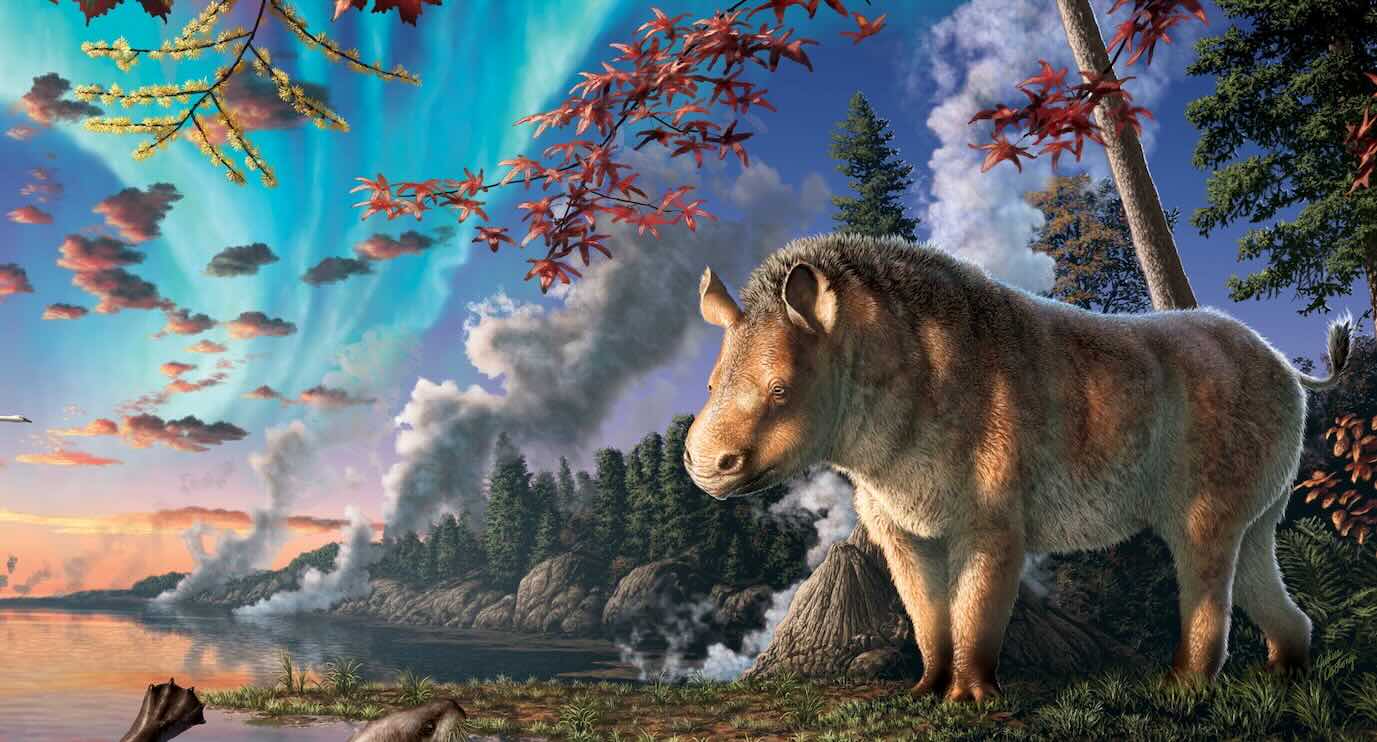 Marisa Gilbert (left) and Dr. Danielle Fraser with fossil of Arctic rhino Epiaceratherium itjilik – Canadian Museum of Nature
Marisa Gilbert (left) and Dr. Danielle Fraser with fossil of Arctic rhino Epiaceratherium itjilik – Canadian Museum of Nature
An extinct species of rhino that lived inside the Arctic Circle 23 million years ago has been discovered.
The nearly complete fossilized skeleton was recovered from the fossil-rich lake deposits in Haughton Crater on Devon Island, in the Canadian High Arctic.
It is the most northerly rhinoceros species known.
Rhinos have an evolutionary history that spanned over 40 million years, encompassing every continent except South America and Antarctica.
The new species of ‘Arctic rhino’ lived about 23 million years ago during the Early Miocene period.
“The addition of this Arctic species to the rhino family tree now offers new insights to our understanding of their evolutionary history,” said study author Dr. Danielle Fraser, head of paleo-biology at the Canadian Museum of Nature (CMN).
“Today there are only five species of rhinos in Africa and Asia, but in the past they were found in Europe and North America, with more than 50 species known from the fossil record.”
 Artist recreation of Arctic rhino fossil Epiaceratherium itjilik – Canadian Museum of Nature / SWNS
Artist recreation of Arctic rhino fossil Epiaceratherium itjilik – Canadian Museum of Nature / SWNS
“More broadly, this study reinforces that the Arctic continues to offer up new knowledge and discoveries that expand on our understanding of mammal diversification over time.”
Scientists described the updated family tree for rhinocerotids in the journal Nature Ecology and Evolution, providing evidence that the new Arctic species migrated to North America across a “land bridge” that may have been a passage for terrestrial-mammal dispersal millions of years later than suggested by previous evidence.
The research shows Epiatheracerium itjilik was “relatively small and slight”, similar in size to the modern Indian rhinoceros but lacking a horn.
In the name, the researchers wanted to honor the rhino’s High Arctic home, so they consulted with Jarloo Kiguktak, an Inuit Elder and former mayor of Grise Fiord, the most northerly Inuit community in Canada.
Most of the rhino’s bones were collected at the Haughton Crater site by Dr. Mary Dawson from the Carnegie Museum of Natural History in Pittsburgh, a trailblazer in Arctic paleontology.
“What’s remarkable about the Arctic rhino is that the fossil bones are in excellent condition,” said a senior researcher. “About 75% of the skeleton was discovered, which is incredibly complete for a fossil.”
Amazing New Fossils:
• Frozen in Time: 32,000-Year-old Woolly Rhino Found with Skin, Fur, and Organs Intact
• Prehistoric Saber-Tooth Cub First to Be Found Mummified in Ice, it Still Has Hair (LOOK)
The team’s analysis offers new insights into how rhinos dispersed over millions of years between North America and Europe, via Greenland, using the North Atlantic Land Bridge. Previous studies suggested the land bridge may have only functioned as a dispersal corridor until around 56 million years ago.
But the new analysis with Epiceratherium itjilik and its related species suggests that dispersals occurred from Europe to North America much more recently, potentially during the late Miocene period.
AMAZING:Paleontologists Hunted for Giant Bird Skull for Over a Century–Finally, a Complete ‘Thunderbird’
The fossil of Epiceratherium itjilik is housed and curated in the fossil collections of the Canadian Museum of Nature in Ottawa.
SHARE WITH RHINO LOVERS On Social Media…
